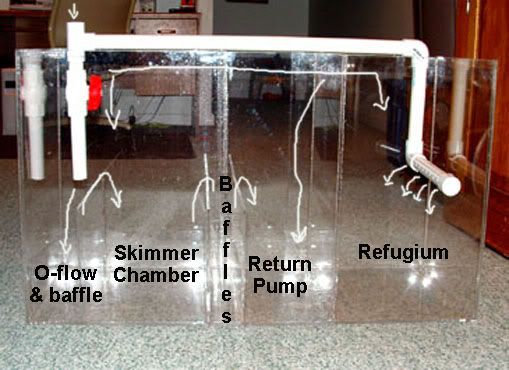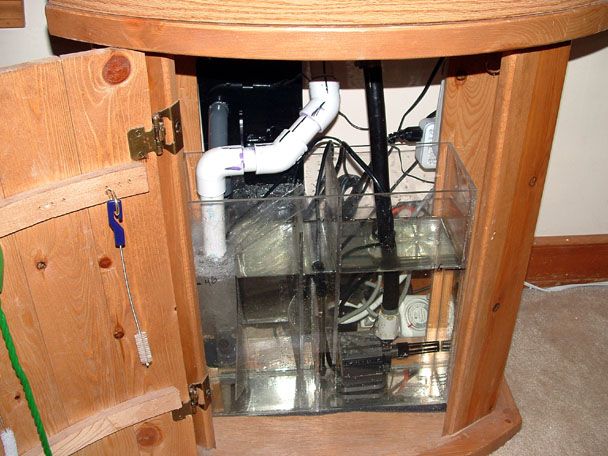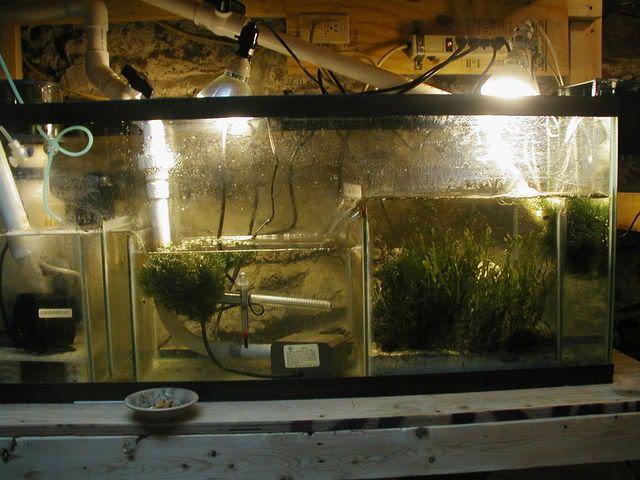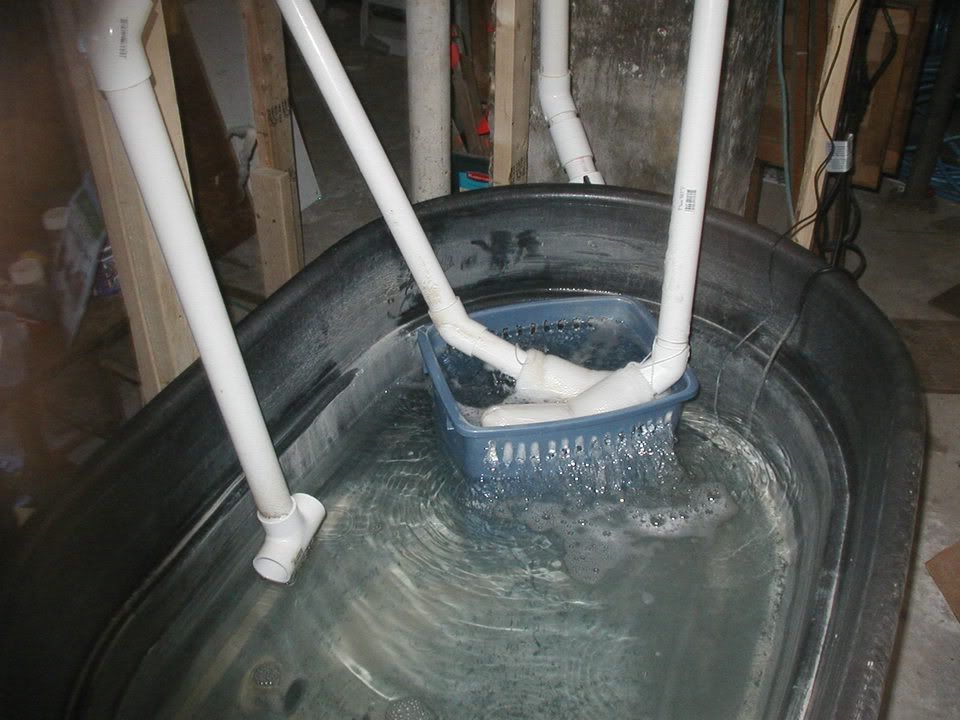Moe commands... I must obey....

A sump is a container of water seperate from your main tank. Typically, a sump is located lower than the main tank.
The main purpose of a sump is for a location to do things that are not visible in your main tank. These can include (but are not limited to), a heater, topping off your water, adding chemicals, or locating a filter (such as a protein skimmer).
Water flows out of the main tank, down to the sump. A pump then returns the water back to the main tank. This way the water is constantly moving between the main tank and the sump.
There are two ways to have the water leave the main tank. The first is with an external overflow box. One box hangs off the top edge of the tank with another hanging opposite it on the outside of the tank. A tube shaped in a "U" shape (called a u-tube), goes between the two. A siphon keeps the water flowing through the u-tube, moving water from the box inside the tank to the box outside the tank. At the bottom of the box outside the tank, a hole with a hose hooked to the bottom of it takes the water down to the sump.
The second way is to have an overflow box built inside the tank, with a hole drilled directly into the tank with the hose attached there to move the water down to the sump.
A pump then returns water back to your tank through another hose (often called the "return line").












